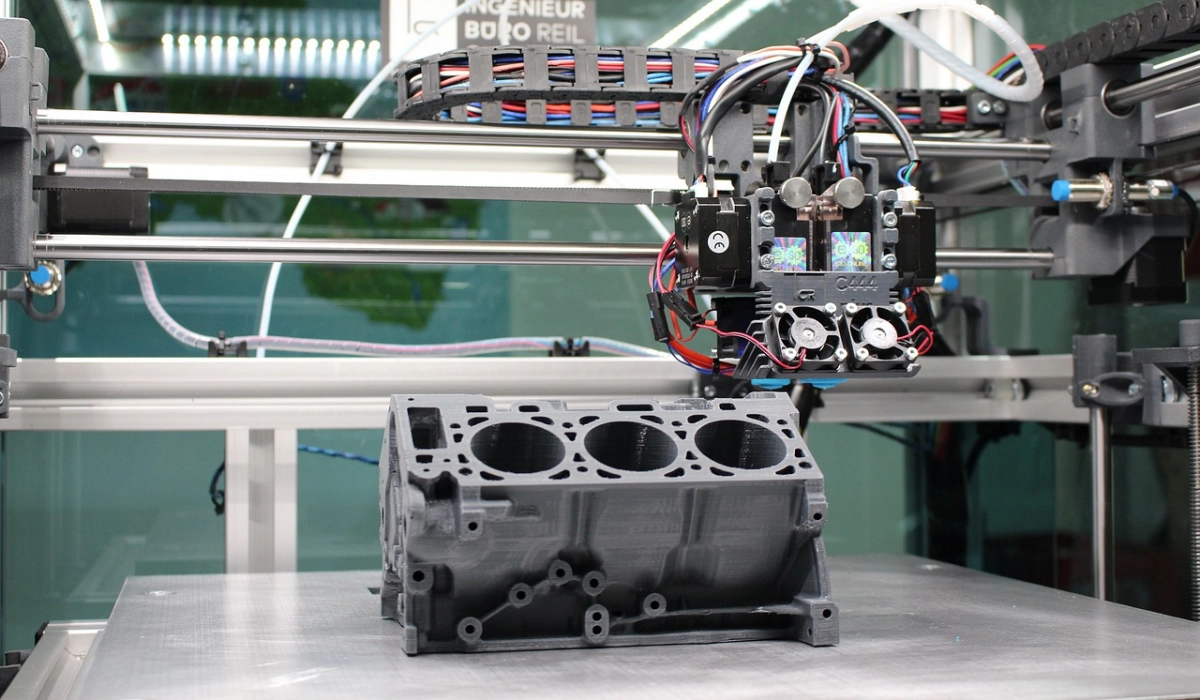Introduction: The advent of 3D printing has initiated a revolutionary wave across a multitude of industries. This article aims to delve into the remarkable versac3D printing technology, from the precision of healthcare applications to the robust demands of aerospace engineering. As we uncover the industries that use 3D printing, we’ll explore the transformative nature of this technology. Particularly with industrial resin 3D printer, we’re witnessing a surge in high-quality, durable parts being produced at unprecedented speeds. These advancements are not only fueling innovation but also reshaping how industries approach design, prototyping, and production, marking a new era in manufacturing and engineering.

The Basics of 3D Printing
At its core, 3D printing is a process of creating three-dimensional objects from a digital file, layer by layer. Technologies like stereolithography, fused deposition modeling, and selective laser sintering are among the methods that have made 3D printing a versatile tool. The materials used are just as varied, ranging from plastics and metals to biocompatible resins, each offering unique benefits and challenges. Industries using 3D printing leverage these methods for their specific needs, shaping the future of manufacturing and design.
3D Printing in Healthcare
One of the most profound impacts of 3D printing is seen in healthcare, where it’s used to create custom prosthetics and implants tailored to individual patients. This personalization has revolutionized patient care, making it a prime example of who uses 3D printers. Bioprinting, a frontier of 3D printing, is making strides in replicating human tissues and organs, potentially solving organ shortage crises. The uses for 3D printers in healthcare are vast, illustrating the technology’s potential to save and enhance lives.
3D Printing in Aerospace
The aerospace industry benefits immensely from 3D printing. It’s used to manufacture complex, lightweight components that reduce overall aircraft weight and improve fuel efficiency. Spacecraft and satellites also see components made from this technology. The industries that use 3D printing, like aerospace, appreciate its ability to produce parts that are otherwise too complex or costly to make using traditional methods.
Other Industry Applications
Automotive: The automotive sector uses 3D printing for rapid prototyping and manufacturing custom parts. This accelerates design processes and offers flexibility in testing new concepts.
Architecture and Construction
In architecture, 3D printing is being used to create models and even functional components of buildings. Some projects even experiment with printing entire structures.
Consumer Goods: From custom jewelry to unique home decor, the consumer goods industry is leveraging 3D printing to offer personalized products to customers.
Challenges and Considerations
Despite the promising applications, 3D printing faces technical, ethical, and regulatory challenges. Questions around intellectual property, quality control, and environmental impact are central to discussions about the future of 3D printing. Industries using 3D printing must navigate these issues to fully harness the technology’s potential.
Future Trends and Innovations
Advancements in Materials: Ongoing research into new and improved materials will enable stronger, more flexible, and more diverse applications for 3D printing.
Increased Precision: As precision improves, 3D printers will be capable of producing more intricate and detailed objects, opening up possibilities for complex designs in various industries.
Expansion in Industries: More industries will adopt 3D printing for a range of uses, from complex machinery in manufacturing to intricate parts in the automotive sector.
Biomedical Breakthroughs: The field of bioprinting is set to expand, with the potential to replicate human tissues and organs, revolutionizing medical treatments and transplants.
Ubiquity of 3D Printers: 3D printers will become more accessible and common, becoming essential tools in businesses, homes, and educational institutions.
Customization and Personalization: Increased use of 3D printing will allow for more personalized and custom-made products, catering to individual needs and specifications.
Sustainability and Recycling: Advances in 3D printing will promote sustainable practices, with increased use of recycled materials and new ways to reduce waste.
Integration with Other Technologies: 3D printing will increasingly integrate with other technologies, such as AI and VR, to enhance design, prototyping, and production processes.
The future of 3D printing is not just about what we can create but how we can create it, with implications for efficiency, sustainability, and innovation. As these trends develop, the potential for 3D printing will continue to grow, reshaping industries and everyday life.
Conclusion
3D printing has demonstrated its vast potential and versatility across various sectors. From life-saving medical devices to advanced aerospace components, the applications are as diverse as they are impactful. As we continue to explore and innovate, the uses for 3D printing will expand, further integrating this technology into our daily lives and work. The journey of 3D printing is just beginning, and its trajectory points to a future redefined by creativity, efficiency, and endless possibilities. This evolving journey promises not only advancements in existing fields but also the emergence of new applications that we have yet to imagine, driving forward a wave of technological and creative revolution that will touch every corner of our lives.
References
To delve deeper into the world of 3D printing and its applications across industries, a myriad of resources is available for further reading and exploration. Engaging with these materials will enhance understanding and appreciation of how 3D printing is shaping the future.